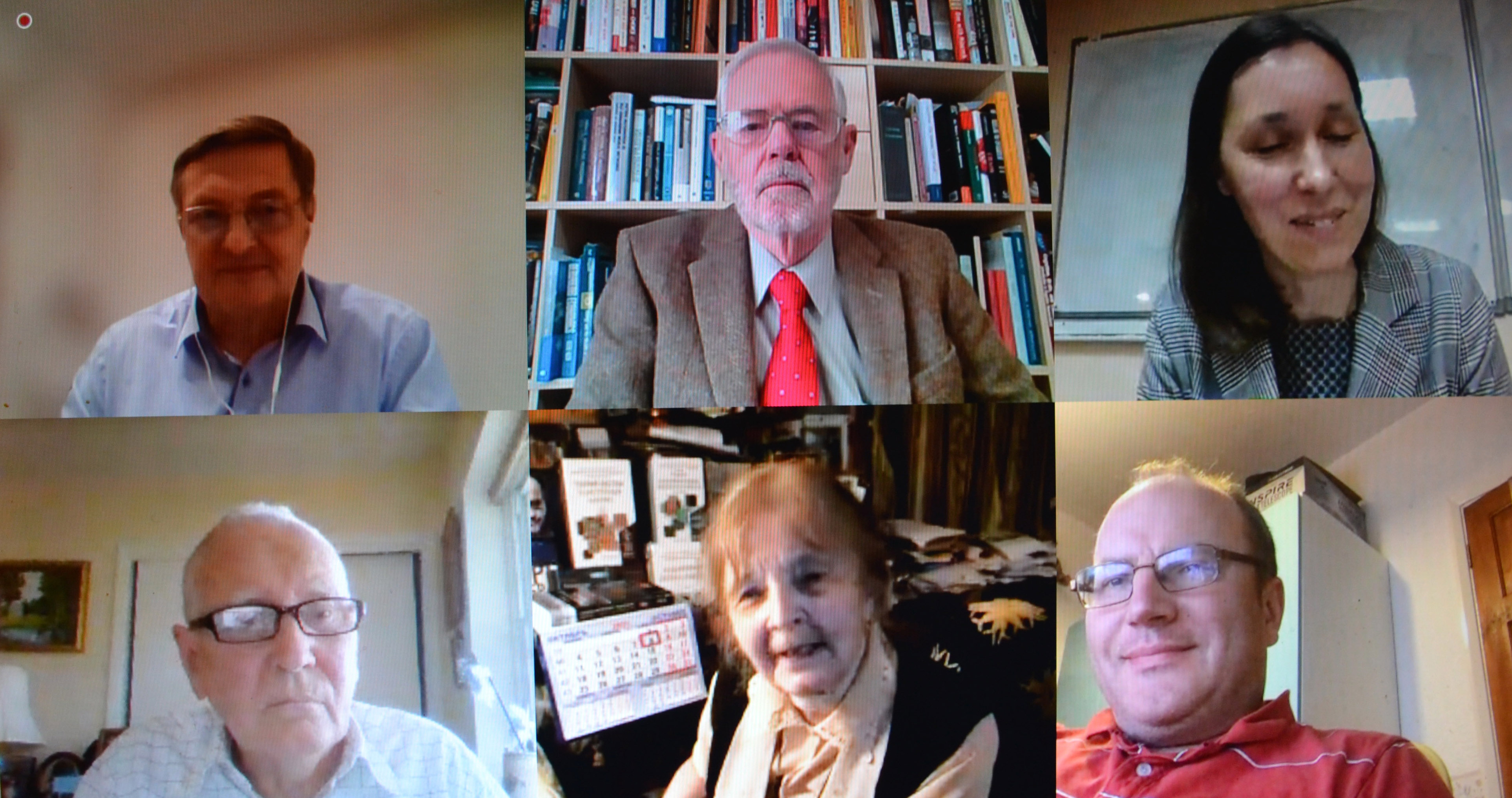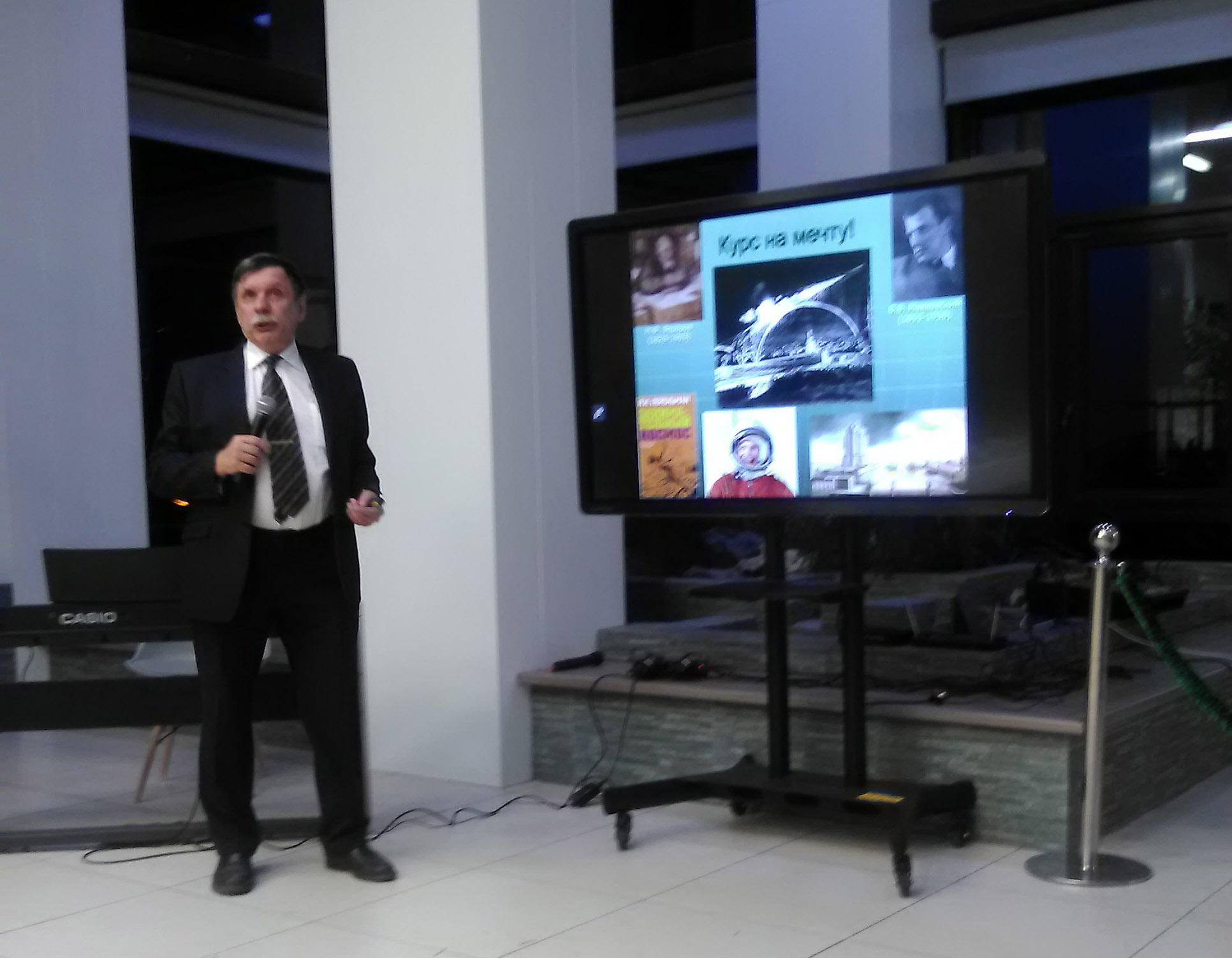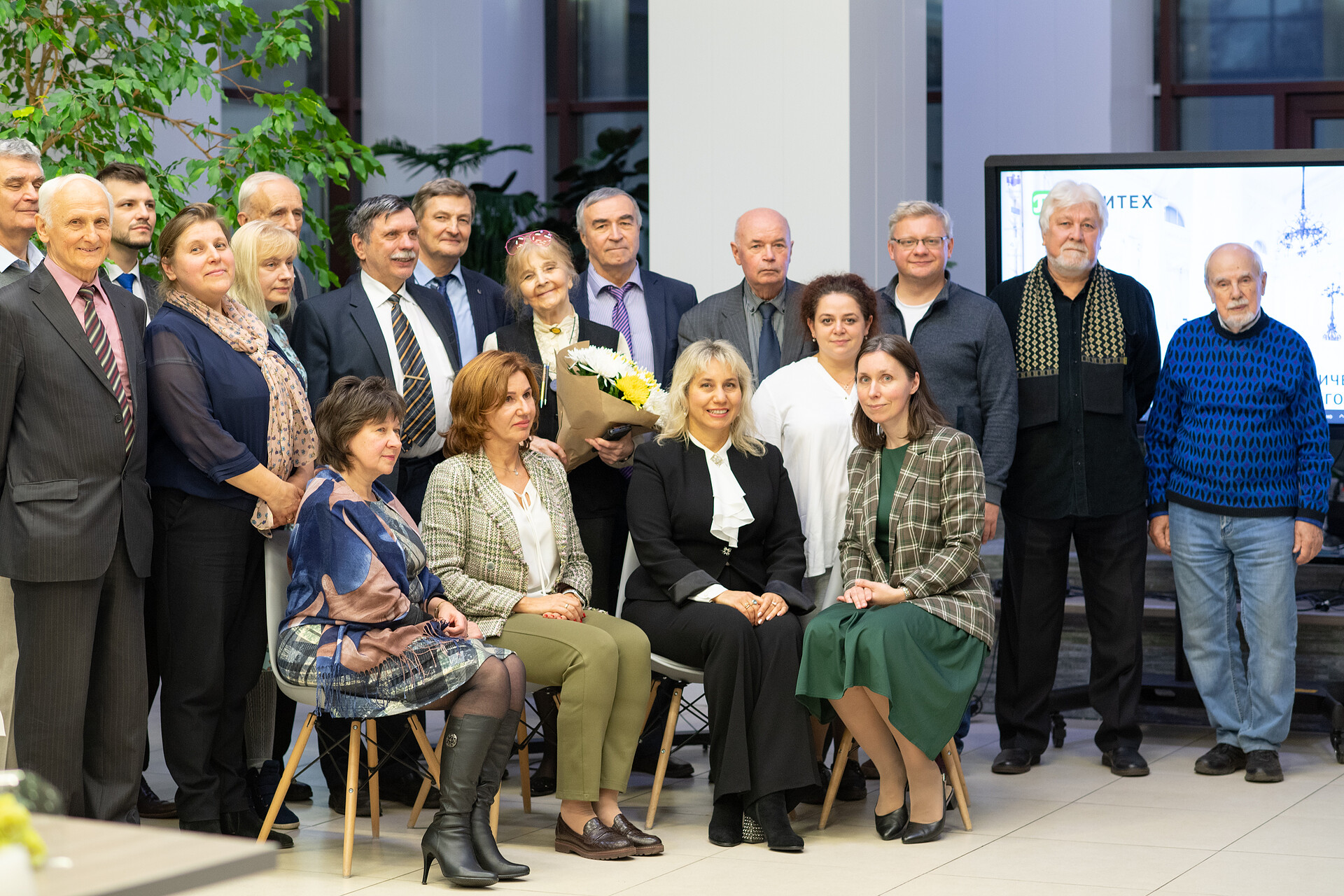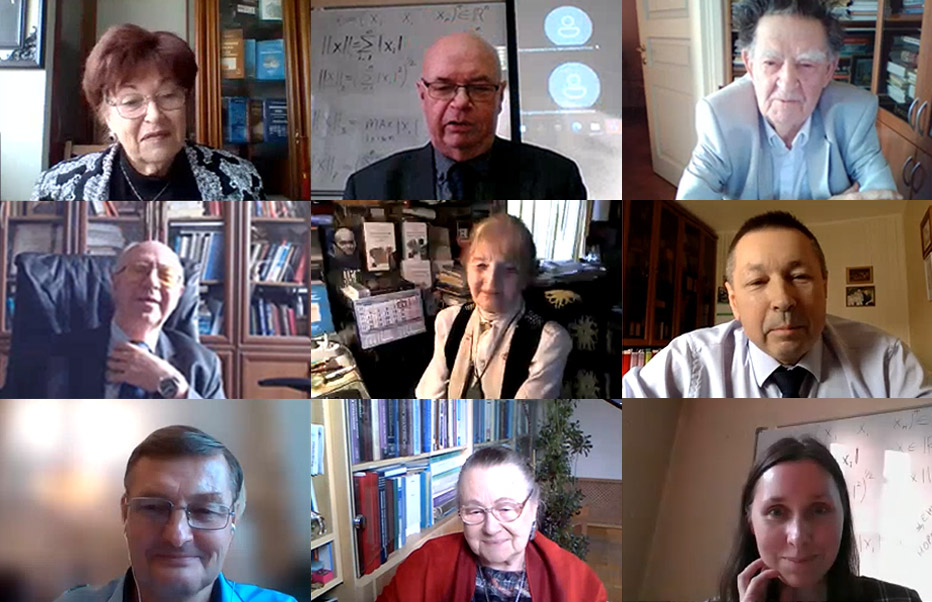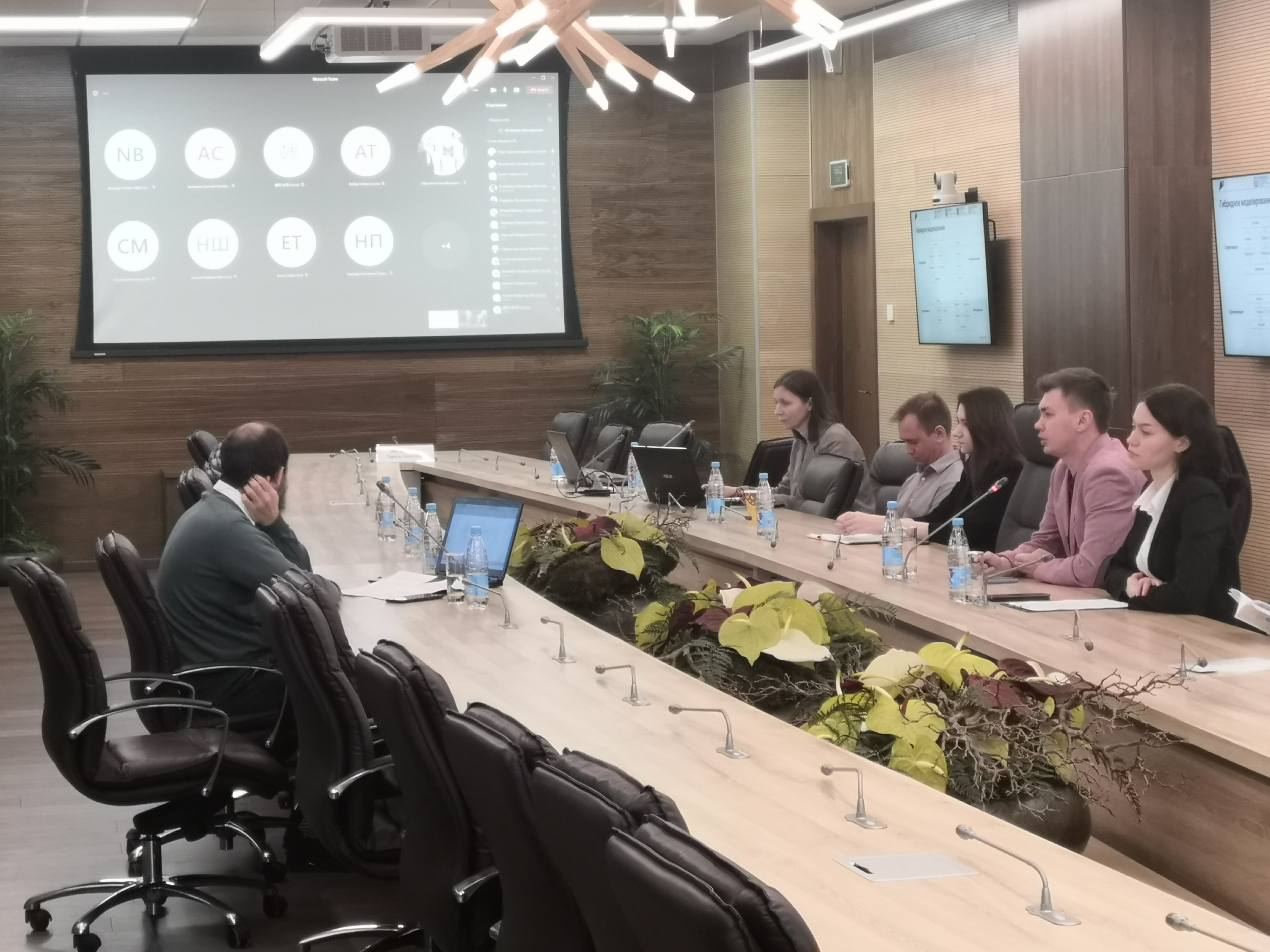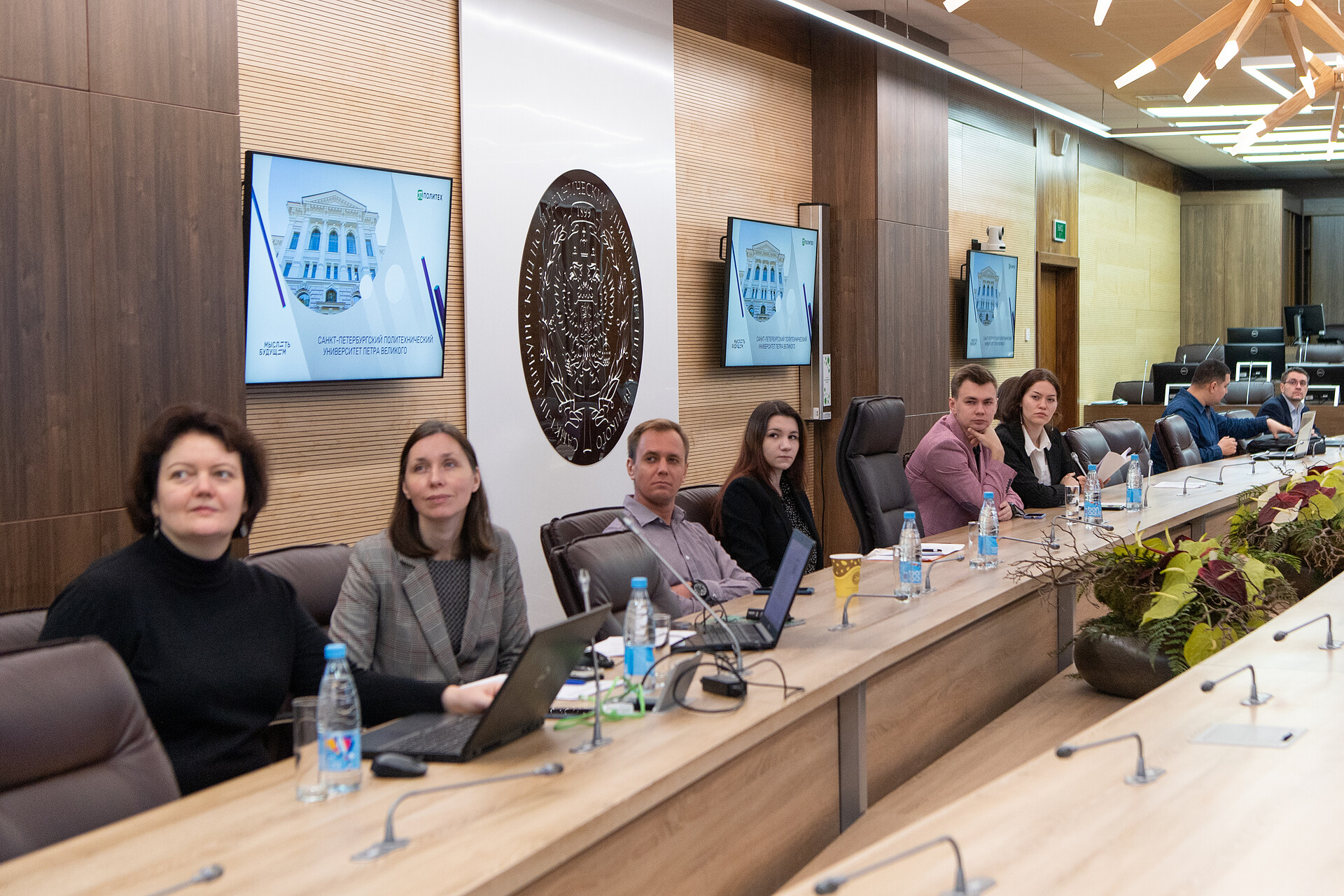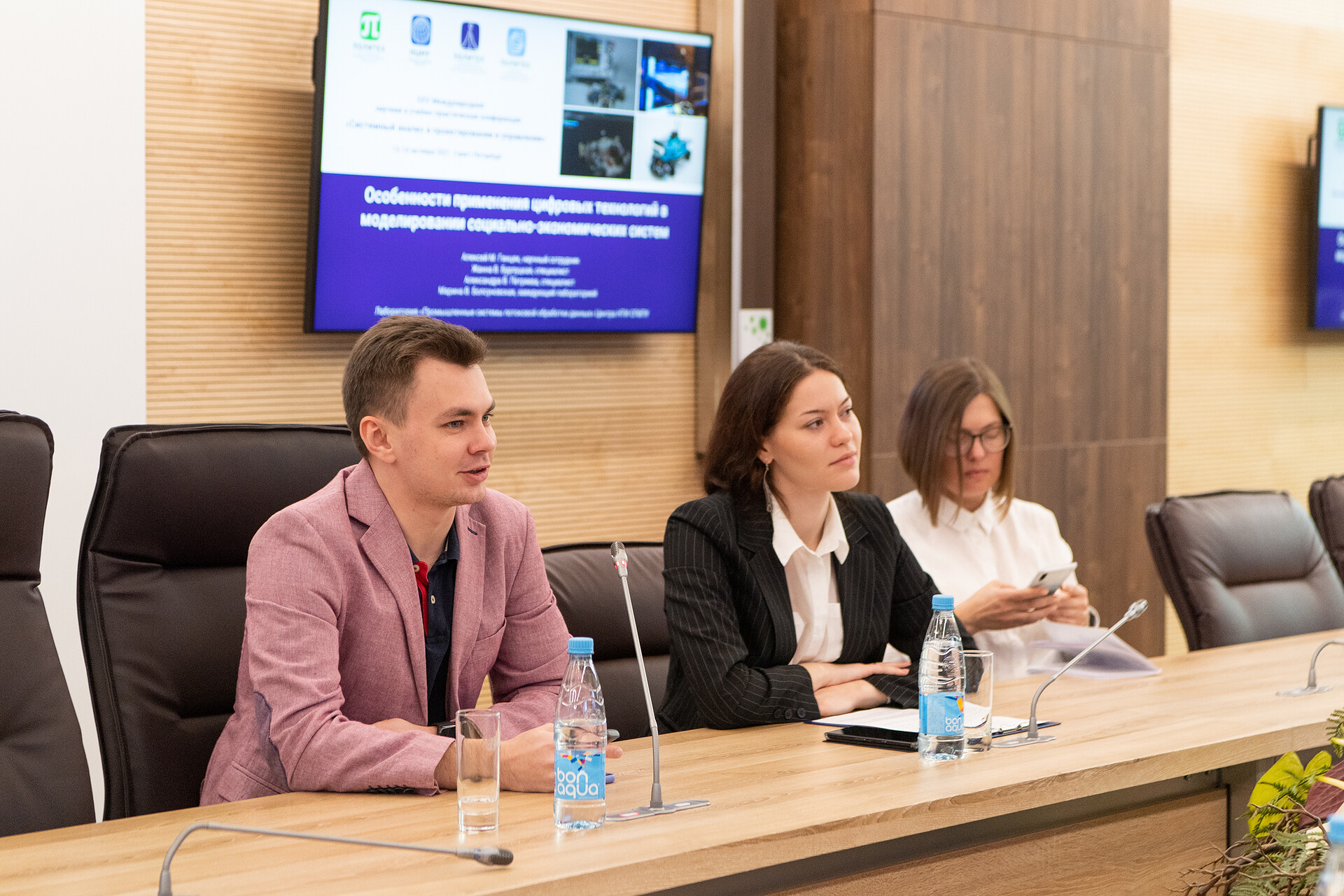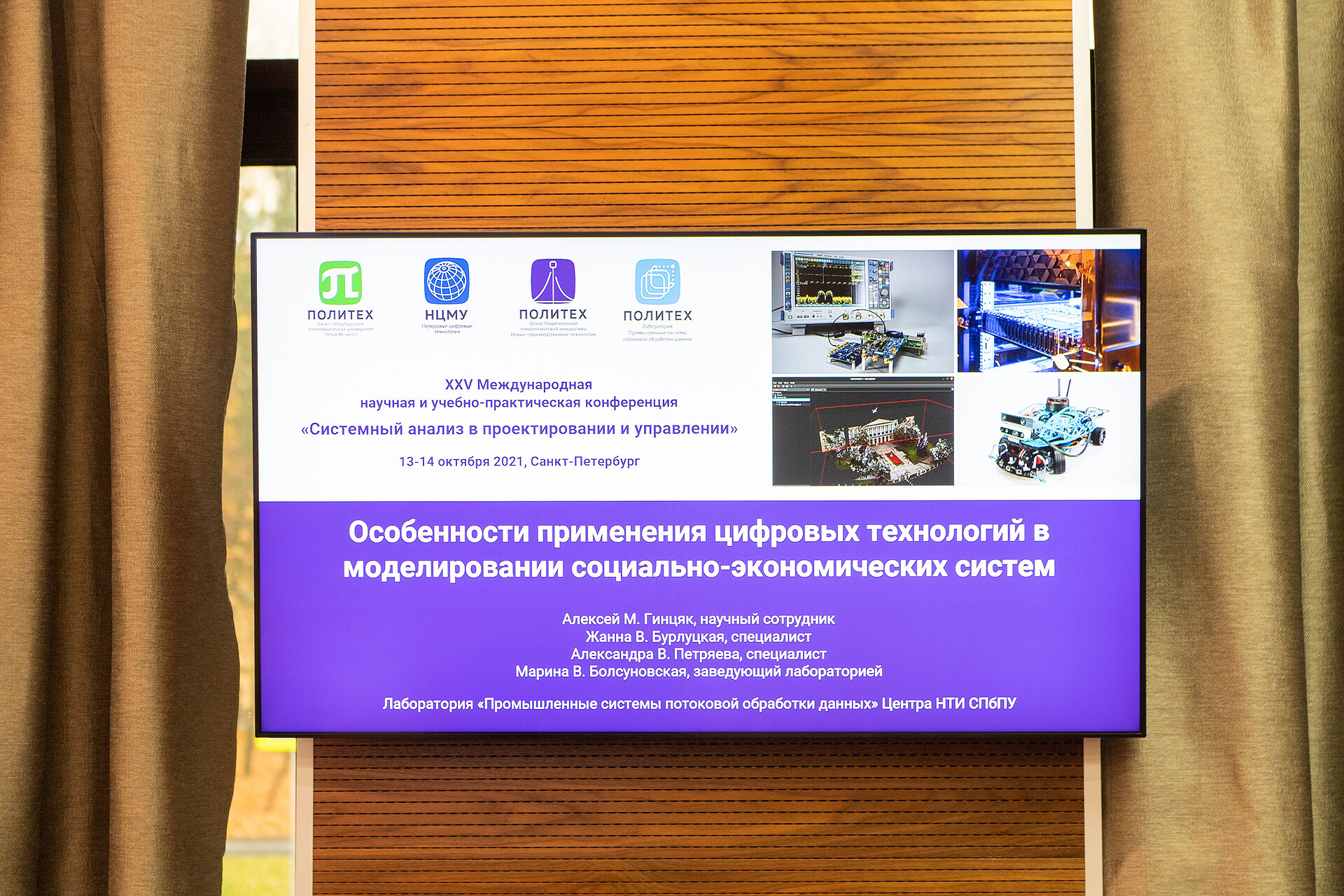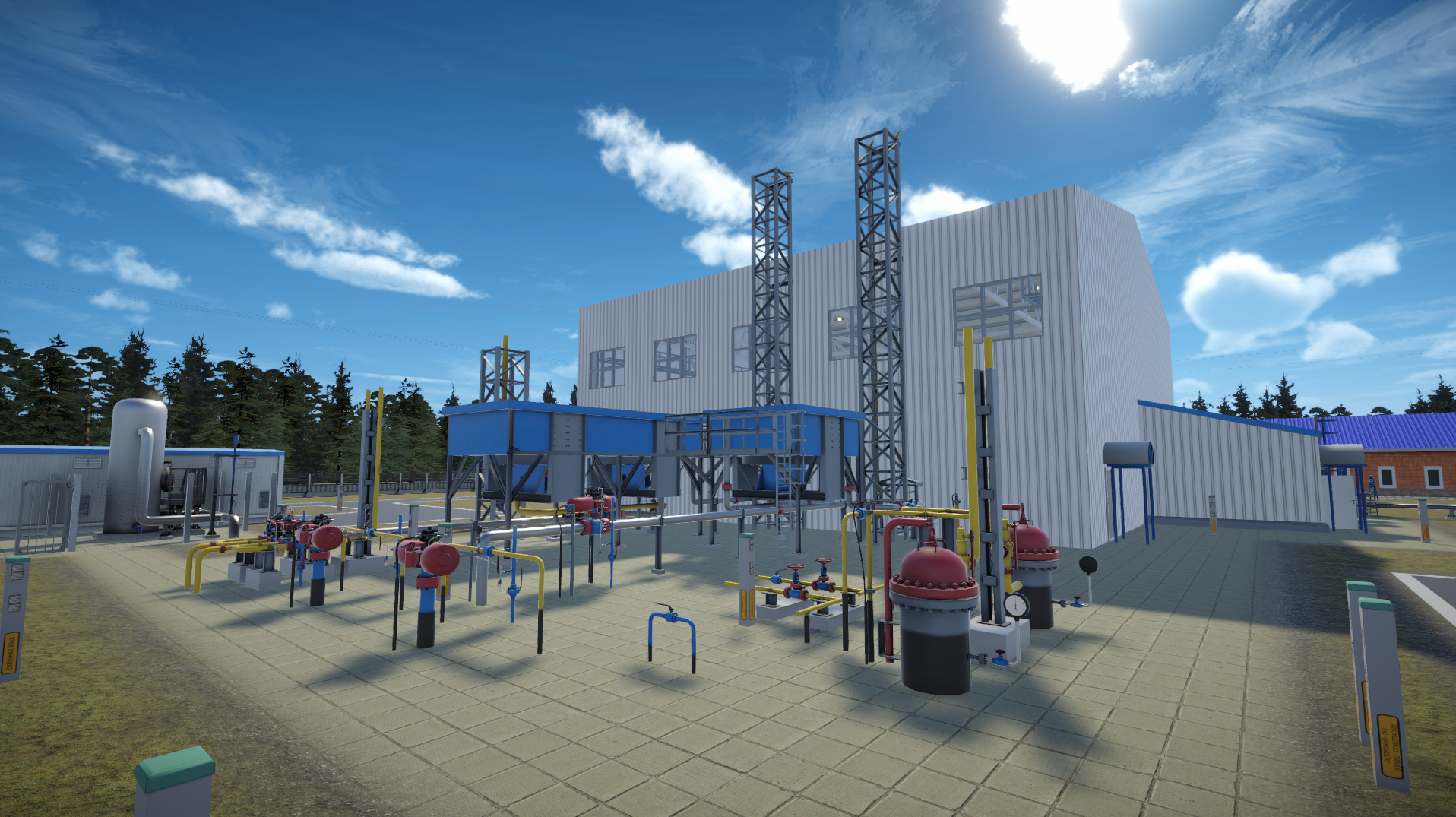The ISSDP Laboratory Arranged a Session on Systems Analysis Techniques for Digital Modelling at SAEC-2021
The session was about the techniques and experience of applying digital design and modelling in various fields, such as socio-economic systems analysis, IT solutions development, production automation, etc.
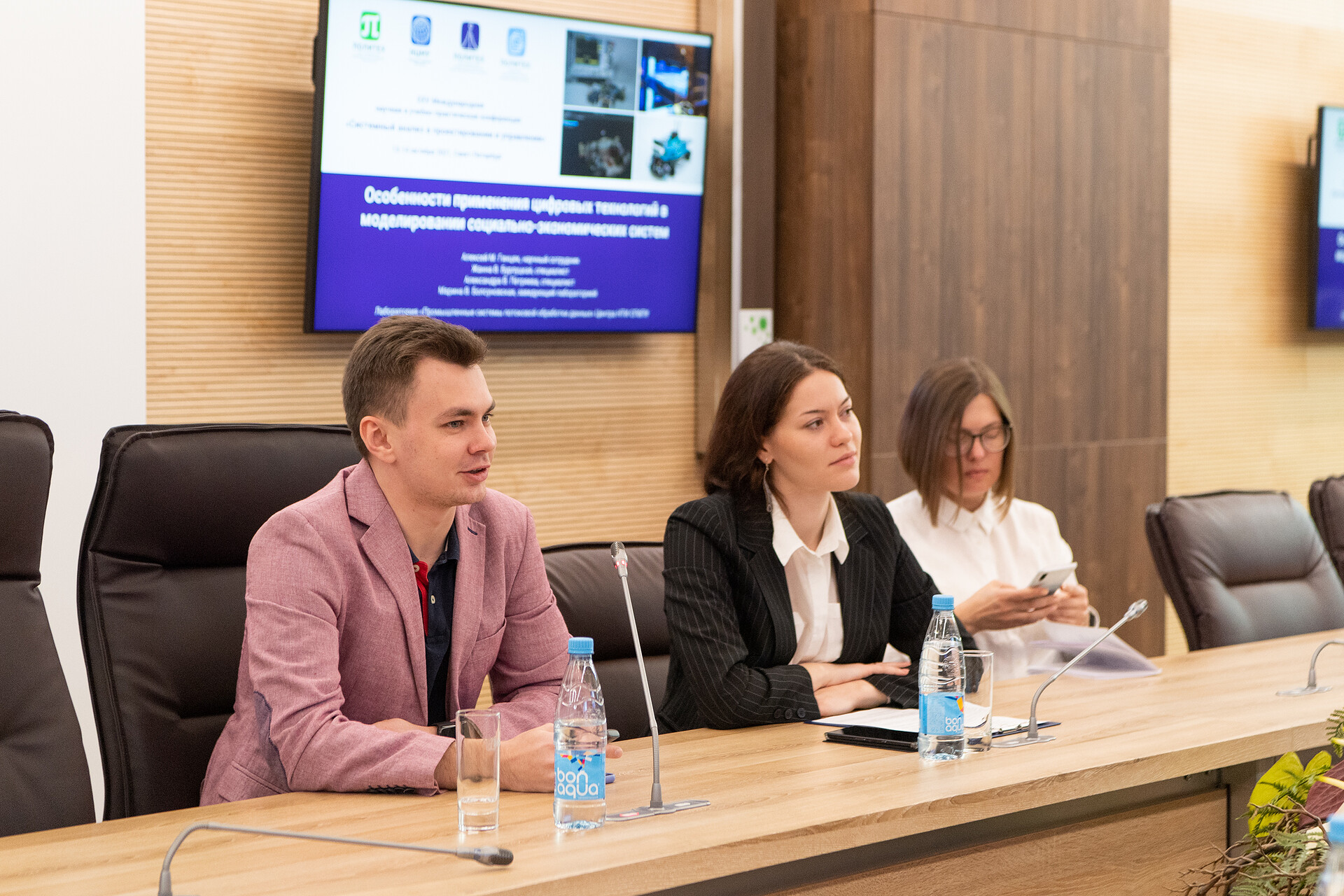
The 25th Anniversary International Scientific, Educational and Practical Conference “System Analysis in Engineering and Control” (SAEC-2021) was held in St. Petersburg on October 13-14, 2021. The event is held annually to present and discuss the latest results of scientific research and practical achievements in the field of systems theory, system analysis, and management theory.
The hosts of conference are the Higher School of Cyberphysical Systems & Control of the Institute of Computer Science and Technology of SPbPU and Southern Federal University (SFedU). This year the conference was held in a mixed format. There were more than 50 offline and more than 150 online participants.
During the conference opening, the program committee chairman, the scientific director of SPbPU, Academician of RAS Yuri S. Vasiliev proposed to reflect in the decision issued within the SAEC-2021 the need to take into account the impact of the Industry 4.0 innovative technologies on the educational process in universities.
The opening speech was delivered by the Co-chairs – Professor of SPbPU Vladimir N. Kozlov and corresponding member of NASU, Professor of the Institute for Applied System Analysis of the National Technical University of Ukraine “Igor Sikorsky Kyiv Polytechnic Institute” Natalia D. Pankratova.
The plenary session was held jointly with the Research Seminar “New Economics Ecosystems” under the President of SFedU, Doctor of Economics, Professor Marina A. Borovskaya.
In the first plenary report prepared by the Chairman and Co-chairs of the SAEC-2021 Program Committee, Dr. Violetta N. Volkova provided insight into the origins of systems theory and system analysis and demonstrated prospects for the interdisciplinary areas development, taking into account the implementation of digital technologies and artificial intelligence, bringing socio-economic processes closer to a state of dynamic equilibrium (according to A.A. Bogdanov), characteristic of living systems.
The session “Methodology of system analysis in digital design and modelling”, which was arranged by the Laboratory of Industrial Systems for Streaming Data Processing (ISSDP Laboratory) of the SPbPU NTI Center, opened the second day of the conference.
Employees and representatives of scientific and industrial partners of the ISSDP Laboratory gave the session scientific reports about the methods and experience in the application of digital design and modelling in various fields, such as analysis of socio-economic systems, development of IT solutions, production automation, etc.
In the report “Unique features of digital technologies for socio-economic systems modeling”, researcher at the ISSDP Laboratory Alexei M. Gintciak presented a conceptual approach to the modelling of sociotechnical and socio-economic systems based on the synthesis of traditional modelling tools of sociotechnical systems with tools inherent in modern engineering projects in the paradigm of advanced production technologies such as dynamic forecasting, interval approach, sensitivity analysis, calibration, verification, and validation. They are not used in sociotechnical systems modelling very often due to the lack of established methodological procedures, but it is promising given the development of digital technologies.
The next report “Systematic approach to data collection and analysis for tourism industry” by Zhanna V. Burlutskaya, specialist of the ISSDP Laboratory, deals with the tourism industry key indicators analysis within the domestic tourism model building. The authors analyzed the available methods for the tourism industry data acquisition and classifying and also reviewed the international experience of using various indicators in tourism processes models. The research outcome is a data model that includes several key groups of indicators and considers the tourism industry not only from public administration and infrastructure of tourist products perspective, but also from the tourists needs. The resulting data model will lay a groundwork for the development of a domestic tourism model.
Then two reports related to various issues of creating geoinformation systems illustrated by a project of an information and analytical software suite for statistical data acquisition and analysis in order to assess the sanitary and epidemiological well-being in the Arctic Zone of the Russian Federation were presented. The project is being implemented by order and in close cooperation with the North-West Public Health Research Center (NWRC). The acting head of the Department of Analysis, Evaluation and Forecasting, Senior Research Officer of the NWRC Vladimir N. Fedorov told about the project “Data analysis and results visualization in sanitary and epidemiological well-being assessment using GIS”. The programmer of the ISSDP Laboratory, one of the portal developers Olesya Ivashkevich, presented the engineering aspects of Geoinformation portal data visualization.
Nikolay V. Shafransky, Deputy IT Director of Alliance-Electro, LLC, spoke about the data acquisition and processing system developed by his company by order of SUE “Vodokanal of St. Petersburg”. The automated precipitation information system (AIS “Precipitation”) has already been put into operation and monitors meteorologic conditions in St. Petersburg. The system includes 34 meteorological complexes that automatically measure atmospheric pressure, wind speed and direction, temperature and humidity, and transmit information every 5 minutes to SUE “Vodokanal of St. Petersburg” and to Northwest Administration for Hydrometeorology and Environmental Monitoring (Rosgidromet). The speaker told about the history of the system’s creation, its practical application, and development prospects.
Alexey V. Boikov, research engineer at the ISSDP Laboratory, where he manages projects for industry digitalization, highlighted the experience of the project team in developing integrated digitalization solutions through the example of a workcell. The report discussed the digitalization concept development through the example of a typical production site and the use of simulation techniques to assess the achievement of targets. The speaker paid special attention to the methodological elaboration of the design processes, the implementation of a digital object, and its target state estimation technique.
In the next report “Approaches to detecting color defects in patterned fabrics using computer vision and machine learning technologies” research engineer Alina V. Cherkas presented the interim results of the project being conducted by the ISSDP Laboratory in cooperation with the Ivanovo State Polytechnic University and supported by the Russian Foundation for Basic Research. The project is to develop techniques and models of neural networks multitasking training through the example of a neural network for recognizing different types of fabric faults, which will further automate the quality control process in textile manufacture.
Alina Cherkas reported about the experience of using various approaches to detecting patterned fabrics coloring defects via the use of computer vision and machine learning technologies.
The report on the design of autonomous transport control systems ended the session. The 6th year master’s student of the Graduate School of Intelligent Systems and Supercomputer Technologies ICST SPbPU Sokrat S. Gasparyan, in collaboration with Georgy S. Vasilyanov, research engineer at the ISSDP Laboratory, gave a report on the development of real-time 3d surround view system for vehicle. The speaker presented the developed approach to the design of a multi-camera real-time 360-degree view system via the use of AI technologies.
List of the session “Methodology of system analysis in digital design and modelling” reports
- Bolsunovskaya M.V., Gintciak A.M., Burlutskaya Zh.V., Petryaeva A.A. Unique features of digital technologies for socio-economic systems modeling.
- Burlutskaya Zh.V., Gintciak A.M., Petryaeva A.A. Systematic approach to data collection and analysis for tourism industry.
- Fedorov V.N., Novikova Yu.A., Kovshov A.A., Tikhonova N.A. Data analysis and results visualization in sanitary and epidemiological well-being assessment using GIS.
- Ivashkevich O.A., Rakova V.V., Kuzmichev A.A. Data visualization on the Geoportal for monitoring the sanitary and epidemiological situation in the Arctic Zone of the Russian Federation.
- Serov D.A., Shafransky N.V. Analytical information system “Precipitation” for monitoring the meteorological situation in St. Petersburg. History of creation, practical application, development prospects.
- Boikov A.V., Bolsunovskaya M.V., Uspensky M.V. Comprehensive digitalization solution based on the example of a production cell.
- Abramov N.A., Zagorodny G.V., Kareva T.Yu., Kornilova N.L., Stakhiev A.V., Cherkas A.V. Approaches to detecting color defects in patterned fabrics using computer vision and machine learning technologies.
- Gasparyan S.S., Vasilyanov G.S. Real-time 3D surround view system for vehicle.
